A Rendezvous with Yunnan’s World Heritage Sites
From the quaint and elegant Old Town of Lijiang to the magnificent and enchanting Three Parallel Rivers of Yunnan Protected Areas; from the stunning Stone Forest to the intriguing Chengjiang Fossil Site; and from the breathtaking Cultural Landscape of Honghe Hani Rice Terraces to the historic Cultural Landscape of Old Tea Forests of the Jingmai Mountain in Pu’er, Yunnan is truly a treasure trove of natural and cultural heritage, blessed with a pleasant climate and beautiful scenery. In this edition of our newsletter, we invite you to embark on a romantic rendezvous with the world heritage sites of Yunnan!
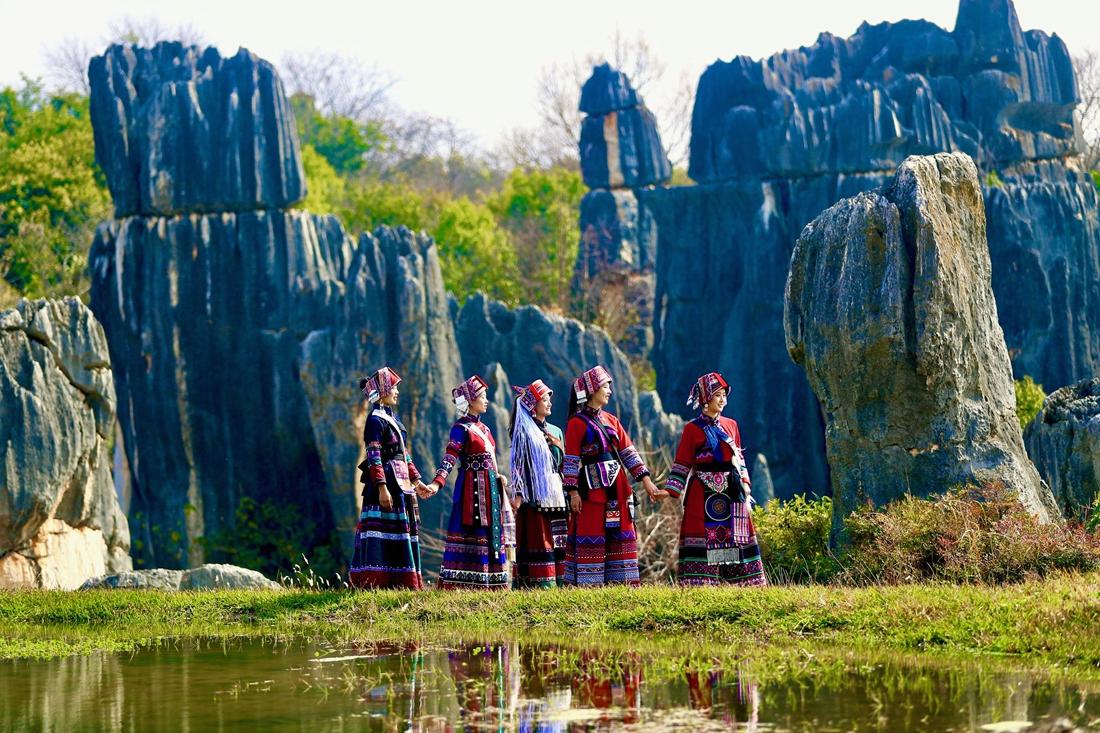
Journeying with Wukong through the Stone Forest
On August 20, 2024, Black Myth: Wukong, an action role-playing game inspired by the Chinese mythological tale Journey to the West, was launched globally. It has received rave reviews from gamers, who praised this remarkable title as a milestone, marking the beginning of the first year for China’s home-grown AAA games—high-quality, stand-alone console games that require significant investment in terms of money, resources, and time.
Journey to the West is one of the four great Chinese classics, telling the story of the Tang Monk who traveled to India with his disciples Sun Wukong, Zhu Wuneng, and Sha Wujing in search of Buddhist scriptures. They ultimately succeeded after overcoming 99 difficulties along the way. Adaptations in TV dramas and movies have made this story a household name in China, with the 1986 TV series Journey to the West achieving particular acclaim. The recent popularity of Black Myth: Wukong has reignited interest in the 1986 series, drawing tourists to its filming locations. One notable destination is the Stone Forest in Yunnan Province.
The Stone Forest is recognized as a prime example of the world’s karst landscapes, encompassing over 1,100 square kilometers, with a protected area of 350 square kilometers. Several episodes of Journey to the West are set in the Shilin Scenic Area, including Episode 4, “Imprisoned Under the Five Elements Mountains,” Episode 11, “Monkey King Is Prodded Into Action,” and Episode 12, “Treasures Recovered in Lotus Cave.”
The Stone Forest is renowned as one of the world’s greatest wonders and is often referred to as a “karst museum.” Over nearly 300 million years, nature has meticulously crafted this geological marvel. Within the Stone Forest, visitors can find various forms of stone columns resembling swords, towers, sticks, and mushrooms, each with its unique shape and character. Additionally, the area features stunning caves, stalactites, corrosion lakes, natural arches, cliffs, waterfalls, and cone-shaped peaks, all of which create a breathtaking and unforgettable landscape.
A must-see when visiting the Stone Forest is the unique Sani culture. The Sani people, a branch of the Yi ethnic group, have lived in this region for generations and are known for their vibrant singing and dancing traditions. They have created the world-famous “Ashima” cultural narrative. “Ashima” is a long narrative poem that tells the ancient legend of a beautiful and intelligent Sani girl named Ashima, who falls in love with a brave and honest young man named Ahei. Ultimately, Ashima is transformed into a stone statue. This legend has been adapted into both a film and a dance drama, gaining fame both nationally and internationally, and has become a significant cultural emblem of Yunnan with global recognition.
The speaking and writing system of the Sani people, along with their rich poetic legends, vibrant ethnic costumes, lively folk songs and dances, traditional wrestling competitions, the passionate Major Sanxian dance, and their unique wedding and funeral customs, all reflect the cultural essence of this ancient ethnic group and highlight regional characteristics.

Discovering the cultural courtyards of Lijiang
You can explore Naxi expressions, practice writing Dongba pictographs, enjoy a cup of wedding tea, wear traditional Naxi clothing, create a pictographic zodiac sign, and learn a Naxi dance. The cultural courtyards of Old Town of Lijiang remain a magnet for visitors, highlighting the richness of intangible cultural heritage.
As you enter the “Magpie - Naxi People” cultural courtyard, your journey into intangible cultural heritage begins. Start by washing your hands in a copper basin, then take a seat and enjoy a refreshing crabapple drink along with candied fruit and other local snacks. After exploring the Dongba pictographs with the teachers in the courtyard, the children don beautiful Naxi costumes and learn to make traditional Naxi wedding cakes on the spot. These cakes are then placed over a charcoal brazier to bake, filling the small courtyard with the delightful aroma in no time.
Naxi Dongba paper, crafted from the rare alpine wild herb known as Wikstroemia, serves as the medium for Dongba pictographs and paintings, boasting a history of over 1,000 years. The “Handcraft of Lijiang” studio is seeing an increasing number of appointments for those interested in experiencing the traditional paper-making process. Engaging in the creation of Dongba paper in Lijiang Old Town is a must-do activity. Participants will learn about the raw materials and take part in peeling, tearing, pounding, scooping, and drying the paper. This traditional and intricate process not only offers a fun experience but also provides a unique glimpse into the culture of Lijiang and its historic old town.
Zhao and her family are from Beijing, and during the summer holiday, she decided to take her children to Lijiang. At the “Handcraft of Lijiang” studio, they not only witnessed the creation of Dongba paper but also crafted their own souvenirs. “This isn’t my first visit to Lijiang Old Town, but this time, it feels like I’ve uncovered more hidden treasures than ever. The cultural experience has been truly meaningful,” Zhao said.
After learning about the cultural medium of Dongba paper, you’ll surely want to explore some Dongba pictographs. The Dongba writing system is known as “the world’s only living pictographs,” representing a vibrant aspect of Naxi Dongba culture. In the Naxi pictographic painting experience studio, manager He Runyuan greets visitors with enthusiasm every day. He patiently introduces tourists to Dongba culture, teaching them how to write Naxi pictographs, and crafting words of best wishes for them using the ancient script on Dongba paper.
In recent years, Lijiang has established and restored 30 cultural courtyards as key venues to showcase Dongba culture, Naxi wedding customs, traditional songs and dances, and red culture. These cultural compounds have attracted numerous tourists, who enjoy a cultural feast in Old Town of Lijiang before returning home with a sense of fulfillment.
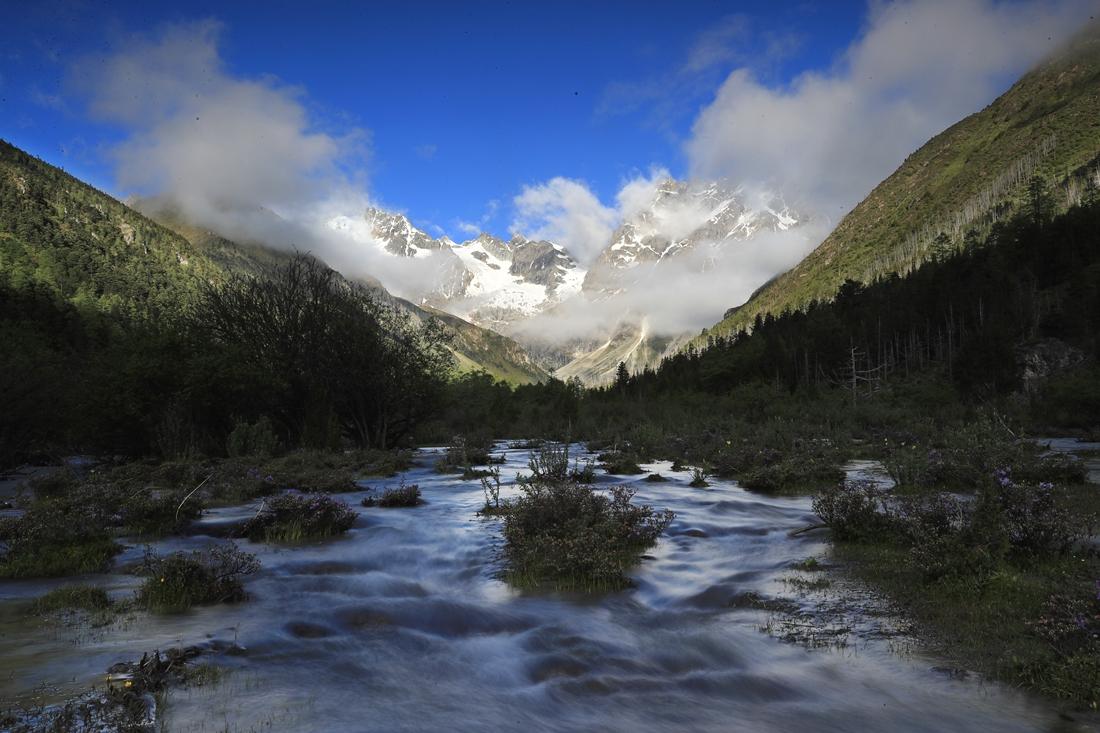
Immersed in the stunning beauty of Three Parallel Rivers
The Jinsha River, Lancang River, and Nujiang River originate from the Qinghai-Tibet Plateau and flow southward, creating a unique natural geographic landscape as they run parallel without converging through the Hengduan Mountains in northwestern Yunnan. This region features deep valleys, lush forests, towering snow-capped mountains, karst peaks, Danxia landforms, alpine lakes, and vast meadows. Each corner reveals breathtaking beauty, making this area a renowned World Natural Heritage site—the Three Parallel Rivers of Yunnan Protected Areas.
Nujiang Lisu Autonomous Prefecture, situated in the heart of the Three Parallel Rivers of Yunnan Protected Areas, is home to the Gaoligong Mountains National Nature Reserve and the Yunling Provincial Nature Reserve, making it a prime destination for outdoor adventure enthusiasts. The area’s unique geographical features and natural environment have given rise to a world-class wild water rafting experience along the Nujiang (Salween) River. In 2017, the region hosted the International Wildwater Canoeing Open, drawing numerous international and domestic rafting athletes and enthusiasts to participate.
The Nujiang River offers a variety of rafting routes to choose from, with options starting at Jiangtoudu in the upper reaches or from Sanjiang Town or Lushui City in the middle reaches. The most renowned section is Laohutiao, where towering mountains meet high waters and turbulent waves, featuring numerous boulders. This area is known as “the most dangerous shoal of the Nujiang River” and has gained a reputation as a “whitewater paradise” among global rafting enthusiasts. As you navigate through the waves in a canoe, each turn and surge become a test of courage and skill. Here, you can unleash your passion and experience the exhilarating challenge of wrestling with nature.
In addition to wild water rafting, the unique terrain and abundant natural resources in this region offer exceptional opportunities for mountain biking. Cyclists can navigate rugged mountain roads, experiencing the thrill and adventure that comes with it. Alternatively, they can glide along well-designed and meticulously maintained bike paths, showcasing their endurance and perseverance while enjoying the breathtaking scenery along the Nujiang River and immersing themselves in the beauty of nature.
For those who prefer a more leisurely adventure, trekking and marathons are excellent options. Take a stroll along the forest paths of Gaoligong Mountains, breathe in the fresh air, listen to the birds singing, and immerse yourself in the tranquility and harmony of nature.
The Grand Orient Canyon of the Nujiang River is often referred to as the world’s most mysterious and untouched river valley, and it ranks among the top three canyons in the world for marathon running. The winding paths along the river, surrounded by lush green mountains and torrential water, create an ideal setting for runners.
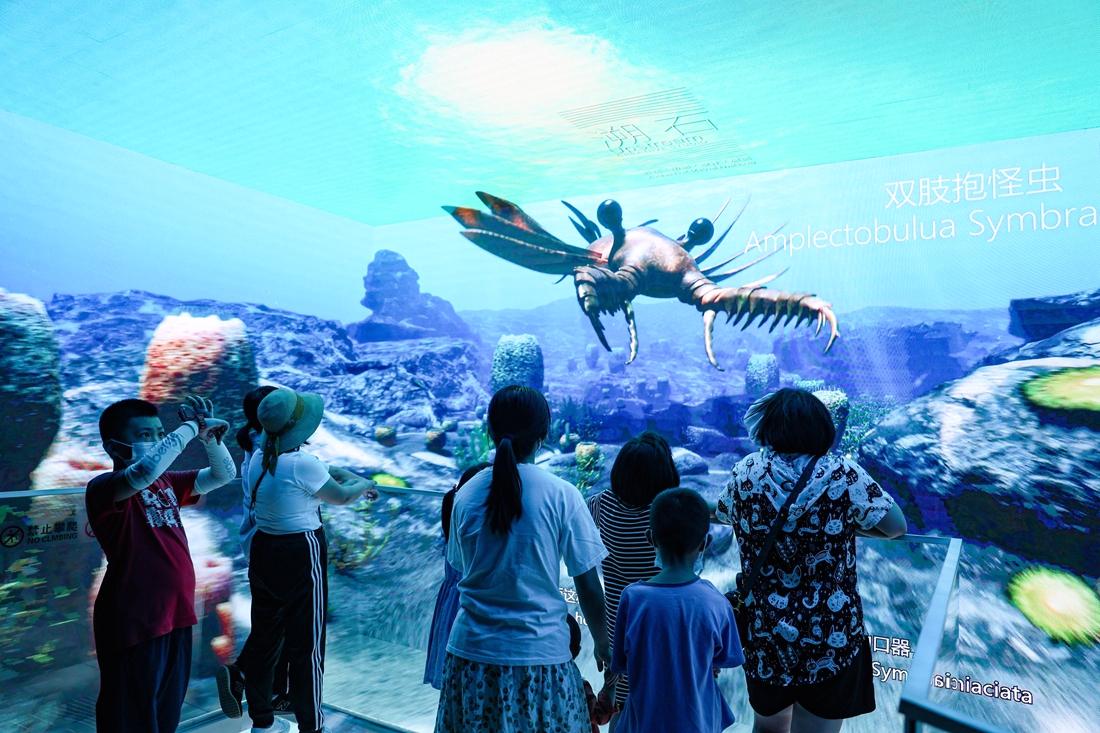
Marveling at the evolution of life over 500 million years
“The fossil before us is the museum’s main attraction—the myllokunmingia, the first creature to develop a brain, heart, and spine. It is the ancestor of all vertebrates currently living on Earth,” said Zhao Mirong, the tour guide at the Chengjiang Fossil Site Natural History Museum in the Fuxian Lake Tourist Resort of Yuxi City, as she pointed to the myllokunmingia, the oldest known vertebrate on the planet.
The Chengjiang Fossil Site serves as a testament to the early Cambrian explosion that occurred 518 million years ago and was added to the World Natural Heritage List in July 2012, making it China’s first and Asia’s only fossil World Heritage site. During holidays, the Chengjiang Fossil Site Natural History Museum has emerged as a popular destination for science enthusiasts and study tours, drawing many visitors eager to learn about the evolution of life on Earth and experience the allure of this natural heritage site.
In the past two months, the museum’s “Source of the Universe” Fantasy Adventure Land has become a new destination for study tours. Centered around the theme of the “Origin of Life,” this venue allows visitors to delve into the mysteries of life, offering an immersive experience where they can explore diverse thematic content and engage in interactive activities throughout the adventure land.
Upon entering the Fantasy Adventure Land, visitors are greeted by vibrant, playful sets that capture the eye. The venue features a wealth of engaging content and multi-sensory experience areas, including the Secrets of the Deep Sea, Tundra Encounter, and Fantasy Wormhole. Here, sound, light, and electricity work together to create an immersive atmosphere, complemented by gas, physical objects, temperature variations, and other sensory experiences. Guests may find themselves enveloped in the chill of the tundra one moment, only to be transported to a cyber desert the next, where rolling heat waves immerse them in the sensation of a scorching landscape.
“This venue is beautiful and highly recommendable. It offers a fantastic parent-child experience,” remarked a lady named Song, who was visiting with her family. She added that the stunning visuals and immersive sensations made their trip truly meaningful.
After delving into the mysteries of the origin of life, visitors to the Fuxian Lake Tourist Resort can explore a variety of other attractions. One of the must-visit spots is the Fuhaiwan Wetland Park, where the park’s breathtaking sea of flowers beautifully complements Fuxian Lake. Visitors can admire the stunning floral displays while enjoying views of the crystal-clear, picturesque lake.
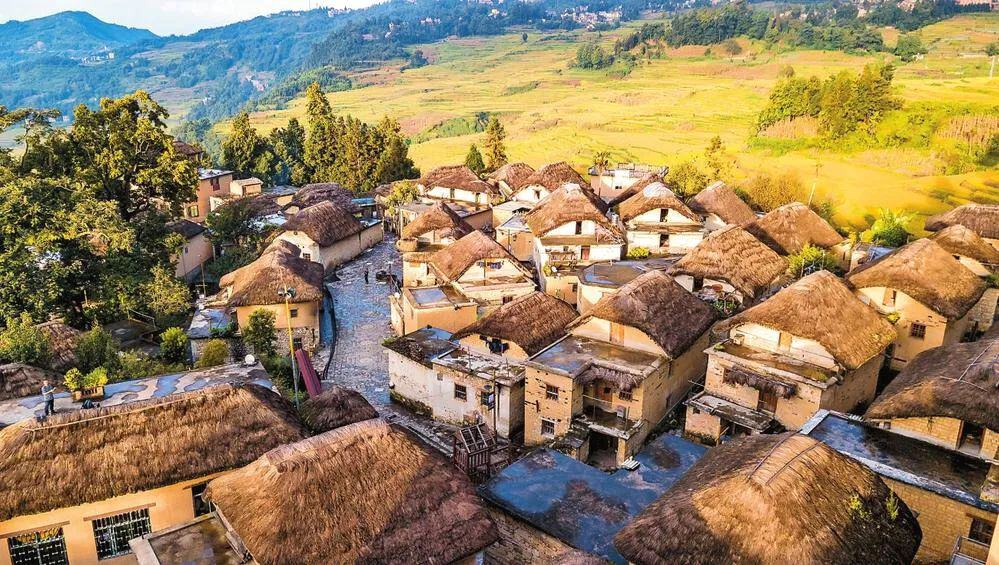
Fulfilling higher aspirations in the Hani rice terraces
“So, what do you consider the happiest thing?”
“I feel happy when the weather is nice, and I’m also joyful when the crops are thriving.”
As travel blogger Youchuan listened to the 64-year-old Hani man’s answer in Azheke Village, Yuanyang County, Honghe Hani and Yi Autonomous Prefecture, Yunnan Province, he turned to admire the mushroom-shaped cabins behind him and the terraced fields in the distance. In that moment, he recognized that this was the greatest reward of his journey. “Higher aspirations must be grounded in real life,” he reflected.
Honghe Prefecture, through which the beautiful Honghe River flows, is home to the Hani Terraced Rice Fields, a UNESCO World Cultural Heritage site. These rice fields stretch across Yuanyang, Honghe, Lüchun, Jinping, and other counties along the south bank of the river. They ascend from the foothills to over 2,000 meters in altitude, with more than 3,700 layers in total. For over 1,300 years, the hardworking and resourceful Hani people have transformed the towering mountains into a stunning pastoral landscape using simple tools such as hoes, baskets, plows, and harrows. Here, time seems to slow down, creating a scene of tranquility, harmony, and picturesque rural life that captivates all who visit.
As you stroll along the winding flagstone path into Azheke Village, you’ll be greeted by the sight of lush green rice terraces below and mushroom-shaped cabins arranged in an appealing pattern. Villagers can be seen leisurely sitting in front of their homes, engaged in the ancient craft of weaving, or smiling warmly at passing tourists. Visitors flock in, frequently pausing to capture the simplicity and beauty of the scene with their cameras.
Azheke, a village with a history of over 160 years, has preserved more than 60 traditional mushroom-shaped cabins, which form the best-preserved Hani architectural complex in Yuanyang County. The village has been included in the third list of traditional Chinese villages and has also been recognized for its charm and tranquility.
In Azheke, tourists can catch fish in the terraced fields, enjoy a picnic beside them, engage in a playful mud battle, and sip coffee by the fireplace. At sunrise and sunset, they can listen to the enchanting songs of Hani elders amidst the rising cooking smoke, immersing themselves in a poetic atmosphere that seems to exist only in their dreams.
“The songs and the people here are beautiful, and what matters most is that I always feel uplifted. I’ve decided to stay here for a month, hoping this idyllic life will allow me to truly experience the local ethnic culture,” marveled Xu Li, a tourist from Hunan.
The traditional villages in Honghe Prefecture, exemplified by Azheke, represent more than just geographical locations; they offer a harmonious blend of nature, culture, dreams, and tranquility. These idyllic scenes serve as a therapeutic balm, gently healing those caught up in the busy urban landscape who yearn for solace. Here, time appears to slow down, allowing people to escape the hustle and bustle and immerse themselves in this rare peace and beauty.

Savoring aromatic Jingmai Mountain tea
Through a single leaf, one can glimpse a mountain. Nestled among the steep peaks of Lancang Lahu Autonomous County in Pu’er City, Yunnan Province, Jingmai Mountain has remained steadfast for ages. Over a lengthy period, the local ethnic groups have cultivated tea, fostering a unique cultural landscape that embodies the symbiosis of forests and tea, as well as the harmony between people and the Earth. On September 17, 2023, the Cultural Landscape of Old Tea Forests of the Jingmai Mountain in Pu’er was inscribed on the World Cultural Heritage List, marking it as the world’s first tea-themed World Heritage site.
This World Heritage site, which harmoniously blends forests, tea plantations, and villages, has attracted an increasing number of tourists. In ancient villages such as Nuogan and Wengji, visitors can be seen everywhere—some capturing beautiful moments with their cell phones, while others enjoy complimentary tea in the homes of local villagers, savoring the rich, mellow aroma.
Jingmai Mountain offers a spectacular sea of clouds, breathtaking sunsets, and a chance to savor local delicacies. According to Yune, a Bulang ethnic girl who runs a B&B, since the Cultural Landscape of Old Tea Forests of the Jingmai Mountain in Pu’er was designated as a World Heritage site, the area has welcomed a growing number of tourists, often leading to her B&B being fully booked. “In the past, our income mainly came from selling tea leaves. However, since last year, our tourism revenue has tripled and now surpasses our tea sales,” she said.
Wengji Village is witnessing a growing variety of tourism-related businesses, including milk tea shops, B&Bs, restaurants, and cultural merchandise stores. “To ensure that our guests enjoy good food, comfortable accommodations, and engaging activities while experiencing the local ecology, we have introduced the Bulang ‘Dala banquet,’ allowing tourists to immerse themselves in the daily life of the community,” Yune explained.
“On Jingmai Mountain, the aroma of tea permeates the air, and tea is woven into the fabric of daily life. Everything people talk about is connected to tea,” said Yang Yi, a tourist from Beijing, as she listened to the rain, sipped a cup of tea, and admired the scenery at Wengji No. 75 B&B. By enjoying a pot of Jingmai Mountain tea, you’re not just savoring its flavor; you’re also embracing a way of life—one that values tranquility and a measured pace. This sense of relaxation inherent in tea culture offers a moment of peace and introspection amid the busy and often impatient rhythm of modern life.
Tourists flock here to enjoy Jingmai Mountain tea, attend tea feasts, and immerse themselves in local culture at teahouses, restaurants, and B&Bs. This vibrant activity is transforming Jingmai Mountain from a quiet retreat into a bustling destination. The harmonious blend of forests and tea, along with the connection between people and the Earth, unfolds like a beautiful painting.
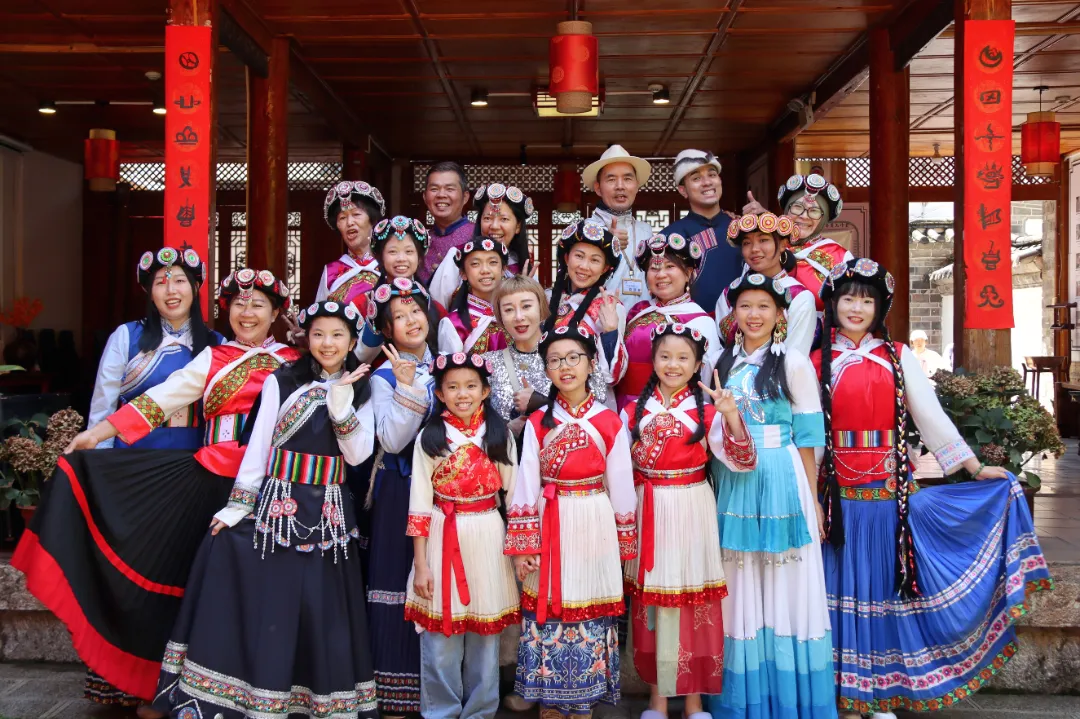
Visitors at a cultural courtyard of Old Town of Lijiang
Read More:
Exploring 10 world heritage sites in just 10 days
On August 6, 2024, the opening ceremony for the China-Cambodia Cultural Corridor, part of Siem Reap-Angkor International Airport in Cambodia, took place, during which the World Heritage Tour Program was unveiled. This program promotes tourist routes and products themed “exploring 10 world heritage sites in just 10 days”. From Siem Reap-Angkor International Airport, visitors can easily travel to Kunming Changshui International Airport to explore China’s world heritage sites, or opt for a journey along the Mekong River to Laos, Myanmar, Thailand, Vietnam, and other neighboring countries, experiencing new surprises each day throughout their 10-day adventure.
Day 1: Angkor Wat
Angkor is the site of the ancient capital of the Cambodian Angkor Dynasty, located in Siem Reap, Cambodia. The existing monuments include the Angkor King City and Angkor Wat. In 1992, UNESCO designated the Angkor monuments as a World Heritage Site. Angkor Wat, as the centerpiece of this ancient capital, is renowned for its stunning architecture and intricate reliefs, making it a major highlight for tourists in Cambodia.
Day 2: Preah Vihear Temple
Situated in Preah Vihear Province, Cambodia, the Preah Vihear Temple is a stunning example of Khmer architecture, perched on a 550-meter-high cliff that offers breathtaking views of the Cambodian plains. It was added to UNESCO’s list of World Heritage Sites in 2008.
Day 3: Prasat Sambor Prei Kuk
Predating both Angkor Wat and the Preah Vihear Temple, both of which are recognized as World Heritage Sites, the Prasat Sambor Prei Kuk features over 100 temples constructed during the Chenla Kingdom, which flourished from the late 6th to the early 7th centuries. This temple complex is characterized by its freestanding pagoda temples, including 10 unique octagonal pagodas that are not found in any other Southeast Asian temple, along with distinctive sandstone decorations typical of that era.
Day 4: Koh Ker archaeological site
Located in Preah Vihear Province, Cambodia, and over 70 kilometers from the renowned international tourist city of Siem Reap, Koh Ker is one of the most remarkable ancient temple complexes in Cambodia. Historically, it served as the capital of the ancient kingdom of Cambodia, and in September 2023, the Koh Ker archaeological site was designated as a World Heritage Site.
Day 5: Stone Forest
Situated in Shilin County, Kunming City, Yunnan Province, the Stone Forest is hailed as the quintessence of the world’s karst landscapes. This remarkable Paleozoic karst formation is known for having the longest history of landscape evolution, the widest distribution, and an impressive variety of unique karst landforms. Renowned for its striking beauty, it has long been celebrated as one of the world’s greatest wonders. In June 2007, the Stone Forest was designated as a World Natural Heritage site.
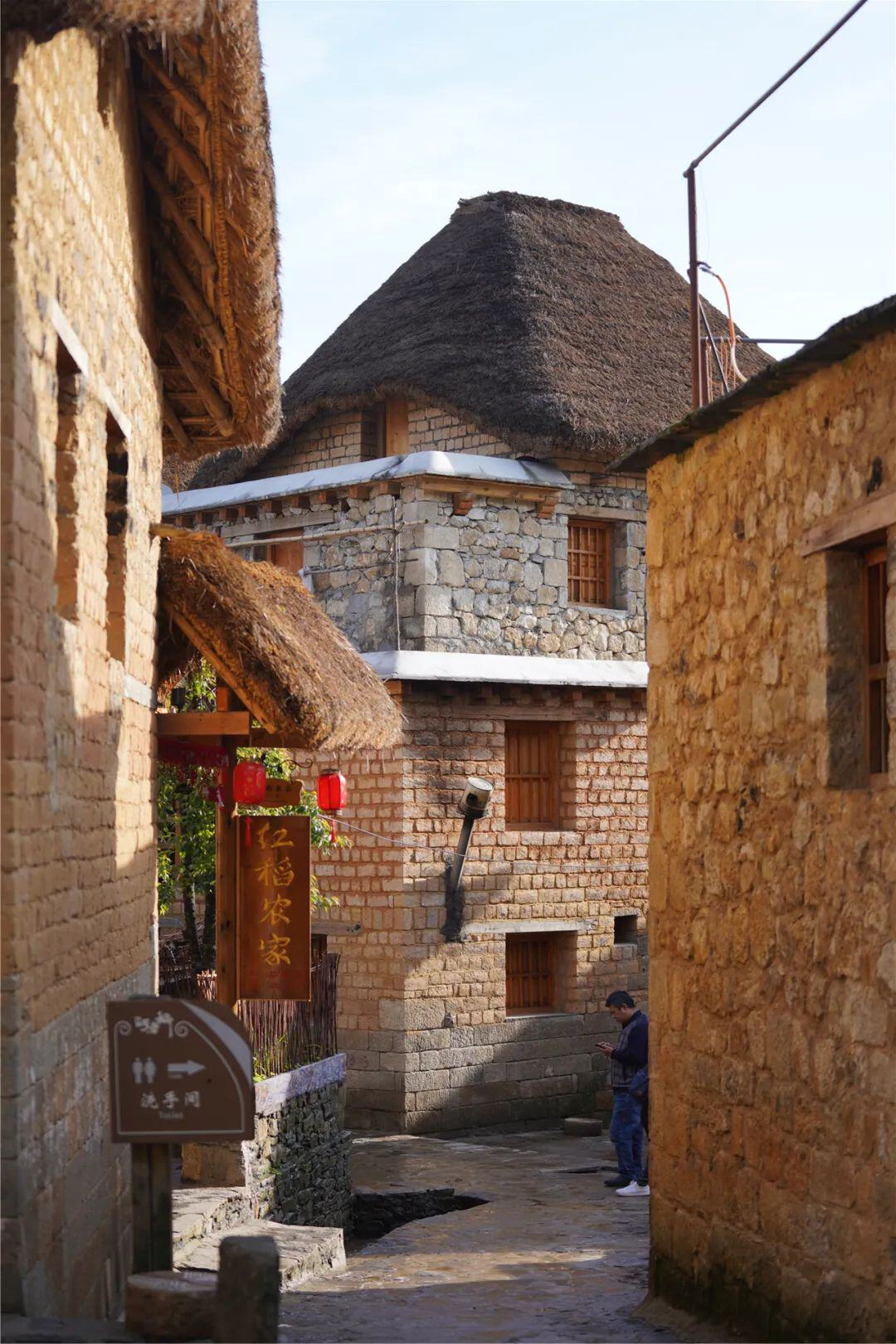
The Azheke Village in Honghe Hani and Yi Autonomous Prefecture, Yunnan Province
Day 6: Chengjiang Fossil Site
The Chengjiang Fossil Site is located at Mount Maotian in Chengjiang City, Yuxi City, Yunnan Province. It was inscribed on the World Natural Heritage List in July 2012, making it the only fossil World Natural Heritage Site in China. Dating back 530 million years, the fossilized animals found in Chengjiang were unearthed in 1984. Their discovery shed light on the Cambrian explosion of life, which the scientific community considers “one of the most awe-inspiring scientific findings of the twentieth century.”
Day 7: Cultural Landscape of Old Tea Forests of the Jingmai Mountain in Pu’er
The Cultural Landscape of Old Tea Forests of the Jingmai Mountain in Pu’er, situated in Lancang Lahu Autonomous County, Yunnan Province, encompasses five large, well-preserved ancient tea forests and nine historic villages. This landscape represents the culmination of the wisdom inherent in Chinese agricultural civilization. In September 2023, it was inscribed on the World Cultural Heritage List, becoming the world’s first tea-themed World Heritage site.
Day 8: Old Town of Lijiang
Old Town of Lijiang, situated in the historic district of Lijiang City, Yunnan Province, is a culturally rich city renowned for its local history, traditions, and ethnic customs. It was inscribed on the World Cultural Heritage List in December 1997. Its architecture reflects the influences of various dynasties, showcasing a blend of cultural characteristics from the Han, Bai, Yi, and Zang peoples, alongside the distinctive style of the Naxi ethnic group. This site stands as a valuable and significant heritage for studying China’s architectural and cultural history.
Day 9: Three Parallel Rivers of Yunnan Protected Areas
The “Three Parallel Rivers” natural landscape, located in the northwest of Yunnan Province, encompasses Lijiang City, Diqing Zang Autonomous Prefecture, and Nujiang Lisu Autonomous Prefecture. This region features a variety of striking landscapes, including alpine valleys, snowy peaks, glaciers, highland wetlands, forests, meadows, and freshwater lakes. It is home to over 20% of China’s higher plant species and 25% of its animal species, earning the protected areas the title of “the world’s biological gene pool”.
Day 10: Historic City of Ayutthaya
Historic City of Ayutthaya, which once served as the capital of the Ayutthaya Dynasty, is a remarkable gem of Thailand’s ancient civilization. Strolling through this historic city, you can encounter solemn Buddha statues, intricately carved stone pillars, and the majestic ruins of palaces that have been shaped by time, each telling stories of past splendor and the vicissitudes of life. In 1991, Historic City of Ayutthaya was inscribed on the list of World Heritage Sites.
Text by our staff correspondents
Translated by YNTA